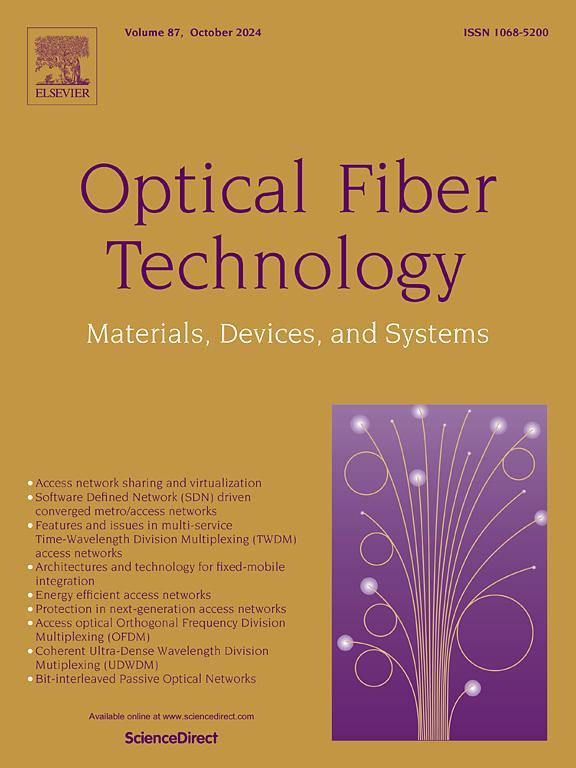Fiber channel modeling based on CGAN and three-dimensional geometric shaping based on E2EDL
IF 2.7
3区 计算机科学
Q2 ENGINEERING, ELECTRICAL & ELECTRONIC
引用次数: 0
Abstract
To optimize the complex nonlinear effects in optical communication systems, this paper introduces channel modeling and three-dimensional (3D) geometric shaping based on end-to-end deep learning (E2EDL), which includes the autoencoder and conditional generative adversarial network (CGAN). The CGAN is employed for fiber channel modeling, and the autoencoder realizes 3D geometric shaping of carrierless amplitude phase (CAP)-16, 32, and 64, which achieves an automatic and smart nonlinear control of optical communication systems. However, compared with two-dimensional (2D) modulation, the 3D modulation requires a larger training dataset, thereby increasing the complexity of the model. By pre-training the transceiver of the autoencoder, the training process becomes more stable, the training time is reduced, and the bit error rate (BER) of the system is further optimized. The results indicate that the running time of the pre-trained system is 55 % less than the traditional system. Compared with 2D modulation, the BER performance of 3D CAP-16/32/64 is improved by an order of magnitude. It demonstrates the effectiveness of the proposed deep learning framework in mitigating nonlinear impairments and achieving global performance optimization in fiber-optic communication systems.
基于CGAN的光纤通道建模和基于E2EDL的三维几何造型
为了优化光通信系统中的复杂非线性效应,本文介绍了基于端到端深度学习(E2EDL)的信道建模和三维(3D)几何整形,其中包括自编码器和条件生成对抗网络(CGAN)。采用CGAN对光纤信道进行建模,自动编码器实现了无载波振幅相位(CAP)-16、32和64的三维几何整形,实现了光通信系统的自动智能非线性控制。然而,与二维(2D)调制相比,三维调制需要更大的训练数据集,从而增加了模型的复杂性。通过对自编码器的收发器进行预训练,使训练过程更加稳定,减少了训练时间,进一步优化了系统的误码率。结果表明,预训练系统的运行时间比传统系统缩短了55%。与二维调制相比,CAP-16/32/64的三维误码率性能提高了一个数量级。它证明了所提出的深度学习框架在减轻非线性损伤和实现光纤通信系统全局性能优化方面的有效性。
本文章由计算机程序翻译,如有差异,请以英文原文为准。
求助全文
约1分钟内获得全文
求助全文
来源期刊

Optical Fiber Technology
工程技术-电信学
CiteScore
4.80
自引率
11.10%
发文量
327
审稿时长
63 days
期刊介绍:
Innovations in optical fiber technology are revolutionizing world communications. Newly developed fiber amplifiers allow for direct transmission of high-speed signals over transcontinental distances without the need for electronic regeneration. Optical fibers find new applications in data processing. The impact of fiber materials, devices, and systems on communications in the coming decades will create an abundance of primary literature and the need for up-to-date reviews.
Optical Fiber Technology: Materials, Devices, and Systems is a new cutting-edge journal designed to fill a need in this rapidly evolving field for speedy publication of regular length papers. Both theoretical and experimental papers on fiber materials, devices, and system performance evaluation and measurements are eligible, with emphasis on practical applications.
 求助内容:
求助内容: 应助结果提醒方式:
应助结果提醒方式:


